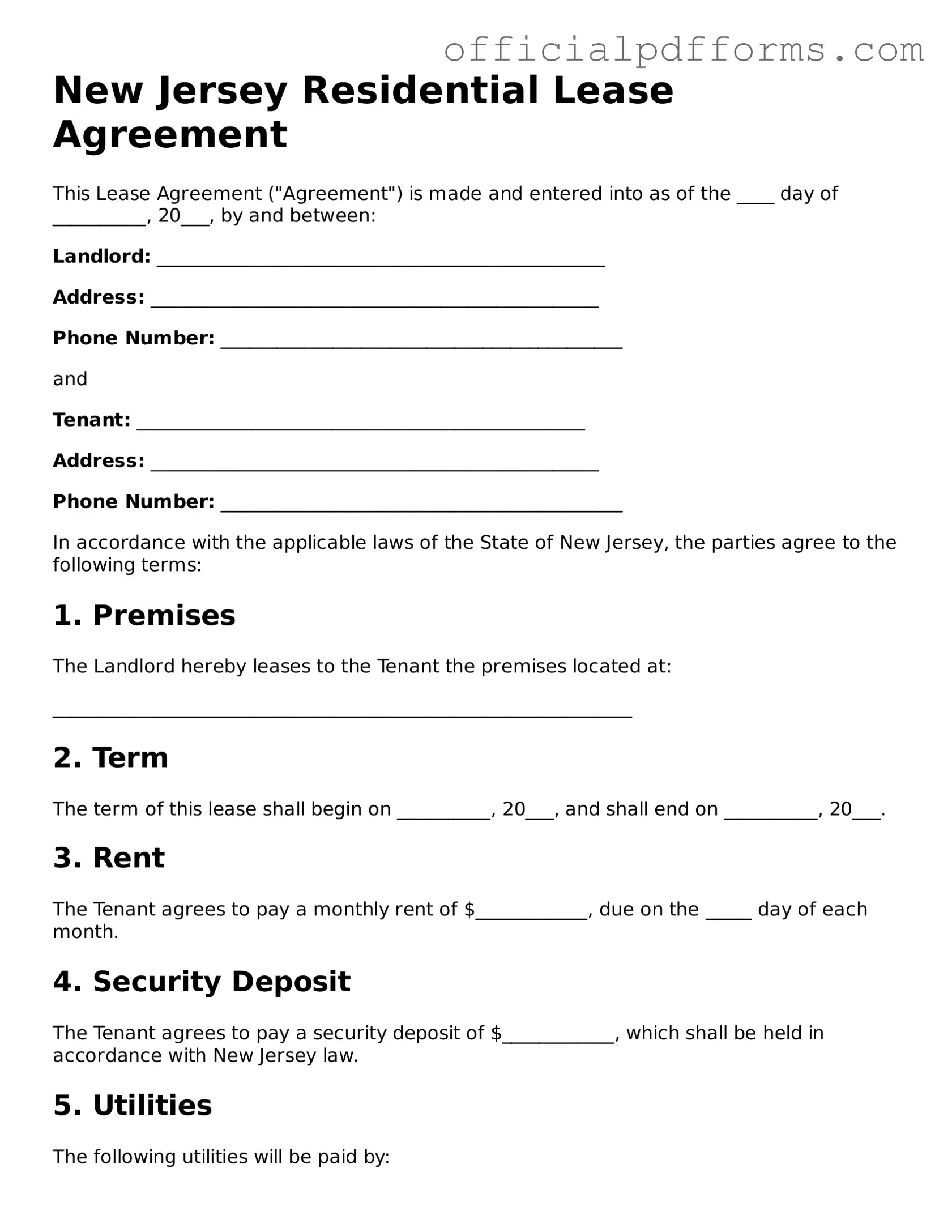A New Jersey Lease Agreement form is a legally binding document that outlines the terms and conditions under which a landlord rents property to a tenant. This form typically includes important details such as the duration of the lease, rental amount, security deposit requirements, and the responsibilities of both parties. It serves to protect the rights of both landlords and tenants, ensuring clarity and reducing the likelihood of disputes.
What are the key components of a New Jersey Lease Agreement?
Several essential elements should be included in a New Jersey Lease Agreement to ensure it is comprehensive and enforceable. These components typically include:
-
Parties Involved:
Names and contact information of the landlord and tenant.
-
Property Description:
The address and details of the rental property.
-
Lease Term:
The start and end dates of the lease.
-
Rent Amount:
The monthly rent and payment due date.
-
Security Deposit:
The amount required, conditions for its return, and any deductions.
-
Maintenance Responsibilities:
Duties of both parties regarding property upkeep.
Is a written lease agreement required in New Jersey?
While verbal agreements can be legally binding, having a written lease agreement is highly recommended in New Jersey. A written document provides clear evidence of the terms agreed upon, which can be crucial in case of disputes. Additionally, certain types of leases, such as those longer than one year, must be in writing to be enforceable under New Jersey law.
Can a landlord increase rent during a lease term?
In New Jersey, a landlord generally cannot increase rent during the term of a lease unless the lease explicitly allows for such an increase. If the lease is month-to-month, the landlord may raise the rent, but they must provide the tenant with proper notice, typically 30 days in advance. It’s essential for both parties to understand the terms outlined in the lease regarding rent adjustments.
What happens if a tenant wants to break the lease early?
If a tenant wishes to break the lease before its expiration, they may face penalties as outlined in the lease agreement. Common consequences include the loss of the security deposit or the obligation to pay rent until a new tenant is found. However, tenants may have options to negotiate with the landlord, especially if there are extenuating circumstances, such as job relocation or health issues. It’s advisable to review the lease terms and communicate with the landlord to explore possible solutions.
What should tenants do if they experience issues with their rental property?
If tenants encounter problems with their rental property, such as maintenance issues or unsafe conditions, they should first notify the landlord in writing. This documentation is important for establishing a record of the problem. If the landlord fails to address the issue in a timely manner, tenants may have the right to take further action, which could include withholding rent or seeking repairs through local housing authorities. Understanding the specific rights and responsibilities as outlined in the lease agreement is crucial in these situations.
